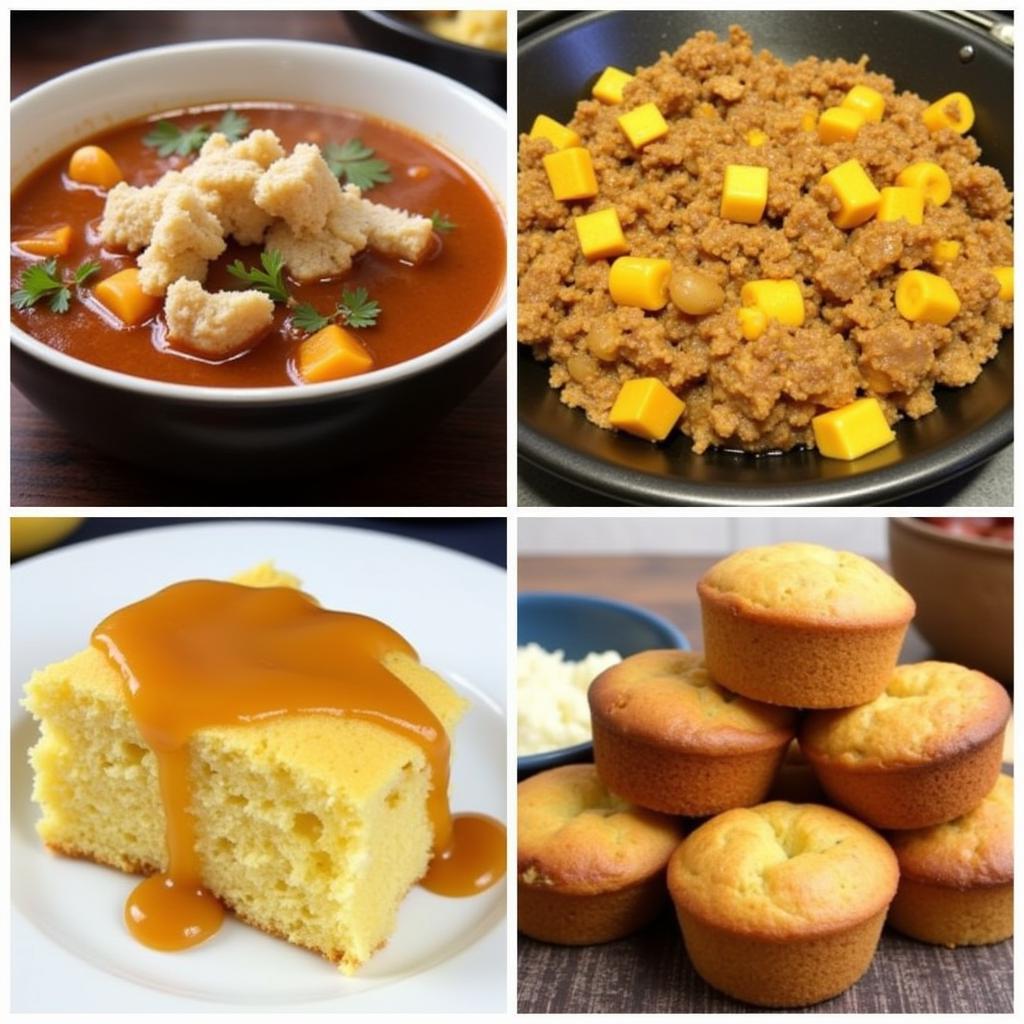African American Cornbread: A Culinary Journey Through History and Heritage
African American Cornbread is more than just a simple bread; it’s a culinary tradition woven deeply into the history and heritage of African Americans. From its humble beginnings in the fields of the American South to modern kitchens across the globe, this soul food staple carries with it stories of resilience, adaptation, and the power of food to unite and sustain.
 Woman Baking Cornbread
Woman Baking Cornbread
A Taste of History: The Origins of Cornbread in African American Cuisine
The story of African American cornbread begins with the arrival of enslaved Africans in the Americas. Corn, indigenous to the Americas, quickly became a dietary staple for enslaved people. They skillfully adapted their traditional African grain preparation techniques to this new ingredient, grinding dried corn into meal and using it to create various dishes, including cornbread.
Unlike the sweeter, cake-like cornbread popular in some parts of the United States, African American cornbread developed a unique identity. It was typically made without sugar or wheat flour, both of which were often scarce and expensive. Instead, this cornbread relied on the simple combination of cornmeal, water, salt, and often buttermilk or sour milk for leavening, resulting in a denser, more crumbly texture with a distinctly savory flavor.
The Significance of Cornbread in African American Culture
Cornbread was more than just sustenance for enslaved Africans; it was a symbol of survival and resourcefulness. It could be cooked over open fires or in Dutch ovens, making it a versatile and essential part of their diet. Over time, cornbread evolved into a beloved comfort food, often served alongside other soul food staples like collard greens, black-eyed peas, and fried chicken.
 Family Meal with Cornbread
Family Meal with Cornbread
Beyond its culinary importance, cornbread holds deep cultural significance within the African American community. It is a reminder of the ingenuity and resilience of ancestors who, despite facing unimaginable hardships, managed to create something both nourishing and delicious from limited resources. The act of making and sharing cornbread continues to be a way of connecting with heritage and honoring family traditions.
Variations on a Classic: Exploring Regional Differences
While the basic recipe for African American cornbread remains relatively consistent, regional variations exist, reflecting the diverse culinary traditions within the African American community. In some parts of the South, a spoonful of hot bacon grease or lard is added to the batter for richness and flavor, while others might incorporate ingredients like crumbled bacon, jalapenos, or cheese.
More Than Just a Side: The Versatility of Cornbread
African American cornbread is incredibly versatile. While it’s traditionally served as a side dish, it can also be crumbled into soups and stews for added texture or used as a base for dressings and stuffings. Leftover cornbread is often transformed into a breakfast treat known as “cornbread pudding,” a comforting and flavorful dish made by soaking crumbled cornbread in a mixture of eggs, milk, and spices before baking.
 Cornbread Variations
Cornbread Variations
Keeping the Tradition Alive: Why African American Cornbread Still Matters
In a world of ever-evolving culinary trends, African American cornbread remains a beloved and essential part of the African American culinary landscape. It is a testament to the enduring power of food to connect us to our past, nourish our bodies and souls, and bring people together around the table. By continuing to make, share, and celebrate this humble yet significant dish, we keep alive the stories, traditions, and legacies woven into each and every crumb.

